Hybrid grapes
Hybrid grapes are finally getting the attention they deserve!
Though some grape growers and winemakers (primarily in cooler northern regions) have been singing their praises for decades, hybrid grape varieties are finally beginning to receive the attention they deserve from the wine world at large.
What is a hybrid grape, exactly?
A hybrid grape is a crossing of two varieties of grapes that are different species.
Unless you go to local vineyards in cooler North American climates or actively seek out hybrid varieties, it’s likely you haven’t ever tried hybrid grapes. Some common varieties include Marquette, Baco Noir, Vignoles, St. Croix, Seyval, Frontenac, Marechal Foch, and Vidal blanc, among many many others. You may not have heard of them because the average wine consumer usually drinks Vitis vinifera varieties, which include any of the common grapes you most often hear of… Chardonnay, Cabernet Sauvignon, Riesling, Merlot, etc. You get the picture.
Hybrids are an intriguing and exciting group of grapes, bringing forth new aromas and flavors that set them apart from the average vinifera tasting notes.
What makes them special, or different than vinifera varieties?
Though still within the “Vitis” genus, the species varies – hybrids can be crosses of Vitis vinifera with Vitis riparia, labrusca, rotundifolia, etc. This means that as they crossbreed, the different species bring certain traits to the table which can of course be either beneficial or detrimental to a grape variety attempting to create quality wine.
Benefits
- Resistance to many grapevine diseases
- New, interesting traits (aromatics, taste, winemaking styles)
- Grow better in northern and humid climates
- Increasing public interest
- Easier to grow organically/with less intervention
Drawbacks
- Oftentimes higher acidity
- Low tannin producers
- Less known/recognized than vinifera wines
- Associated with “foxy” aromas
Hybrid wine making tips:
- Use sacrificial tannins during winemaking. Because hybrids are already low in tannin, take advantage of fermentation tannins during winemaking so the tannins within the skins don’t get used up, leaving you with an even lower tannin red wine.
- Be sure to check pH and TA before fermenting. You may need to use potassium bicarbonate to get the TA down to a manageable number. Plus, if you want the wine to undergo malolactic fermentation, the pH shouldn’t be too low anyway. Both of these numbers may need to be adjusted.
- Hybrids usually come from colder growing regions, so be ready to chapitalize your juice or must if necessary. Anything under 21-22 Brix is going to give you a low ABV.
- Don’t try and force a variety to be something it’s not. There are many positive attributes associated with each hybrid grape that’s out there – that’s why it exists! – so learn what it’s supposed to taste like, try some local producers, and do your best to demonstrate what the variety can do. There’s nothing worse than trying to force a Marquette, for instance, to taste just like a dark, jammy, fruit-bomb Napa Cabernet Sauvignon. You can however make a fantastic light bodied, beautifully colored wine with beautiful aromas of strawberry, raspberry, and spice. Learn about whatever variety you’re fermenting and take it from there!
Variety focus: Vidal Blanc
Vidal Blanc grape
What you need to know about Vidal Blanc
-
French-American hybrid created from a cross of Ugni Blanc (vinifera) and Rayon d’Or (hybrid).
-
Commonly used to make ice wine, but also makes a great still or sparkling wine. Known for its stylistic versatility.
-
Originally created with the intention of being used for cognac production.
Tasting profile
-
Tropical, pear, citrus, candied fruit, melon, mango, lychee, honeysuckle.
Growing Vidal
-
Thick skinned and cold hardy, which makes this variety ideal for the ice wine it is renowned for because it can stay on the vine long enough to freeze without becoming overripe or falling off the vine.
-
Highly susceptible to powdery mildew and anthracnose, botrytis, and mildly susceptible to downy mildew.
What yeast to use for Vidal
-
Alchemy, BA11, DV10, M2, Vin13
Fermenting and aging tips
-
Generally higher acidity; deacidification may be needed pre-fermentation.
-
May have difficulty getting through MLF if pH is too low.






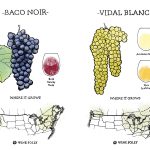
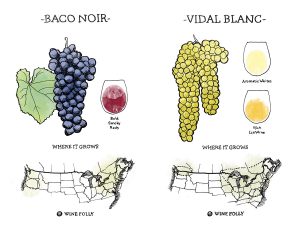
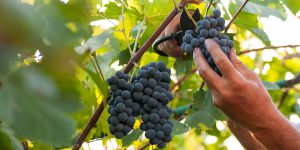
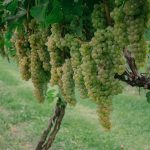
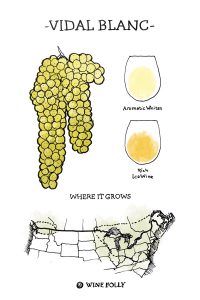
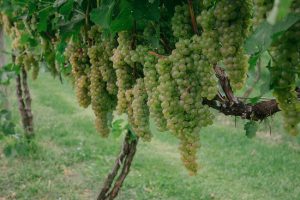

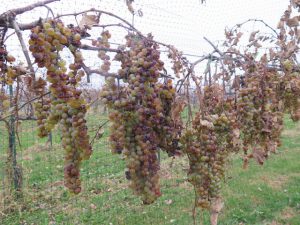
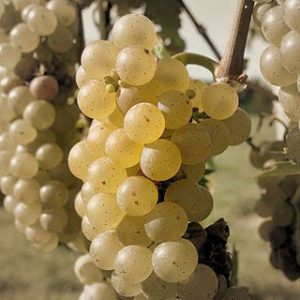
Recent Comments